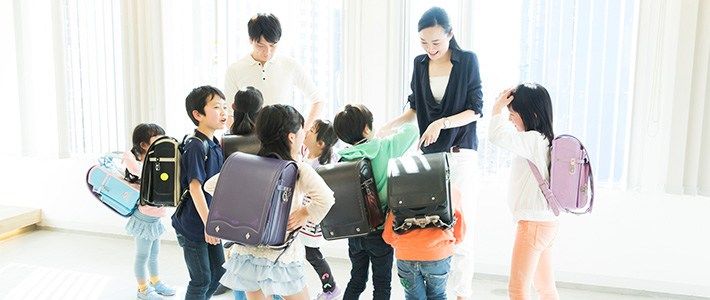
Waiting Lists on the Rise for After-School Care
Society Family- English
- 日本語
- 简体字
- 繁體字
- Français
- Español
- العربية
- Русский
Watching a child leave the preschool years behind and enter elementary school is meant to be a time for celebration. But many dual-income parents whose children are in preschool childcare programs are finding this milestone to be a huge challenge, one commonly known as the ”first grade wall.” Class times in the first year of elementary school are short, children leave school early every day, and there are long spring and summer holidays too. Continuing fulltime work while fitting it in with the school schedule is difficult, and leaving children this young alone for long periods of time is not an option.
When both parents work, after-school care is essential. These programs are run by local authorities and social welfare corporations, using spare classrooms, children’s centers, and other spaces to provide the children with somewhere to play and spend time once school lets out. Childcare assistants look after the children so they stay safe while their parents are not there.
However, as of May 2018, the number of people wishing to use after-school care exceeded the number of spaces available, and the waiting list climbed to a new record high of 17,279 children nationwide. With prefectural waiting lists of 3,821 in Tokyo, 1,657 in Saitama, and 1,602 in Chiba, the metropolitan area accounts for more than 40% of children waiting for spaces, showing the level of severity in the capital region.
The Japanese government formulated a comprehensive plan in 2014 with the aim of creating after-school facilities for 1.22 million children by March 2020, the end of fiscal 2019, in order to solve the waiting-list issue. As of May 2018, 1,234,366 children were registered, achieving this goal. However, in the meantime the number of women working has also increased, leading to greater demand for spaces, so the waiting list still remains. A new goal was set in September 2018 to create another 300,000 spaces in the five-year period from fiscal 2019 to 2023.
(Translated from Japanese. Banner photo © Pixta.)
